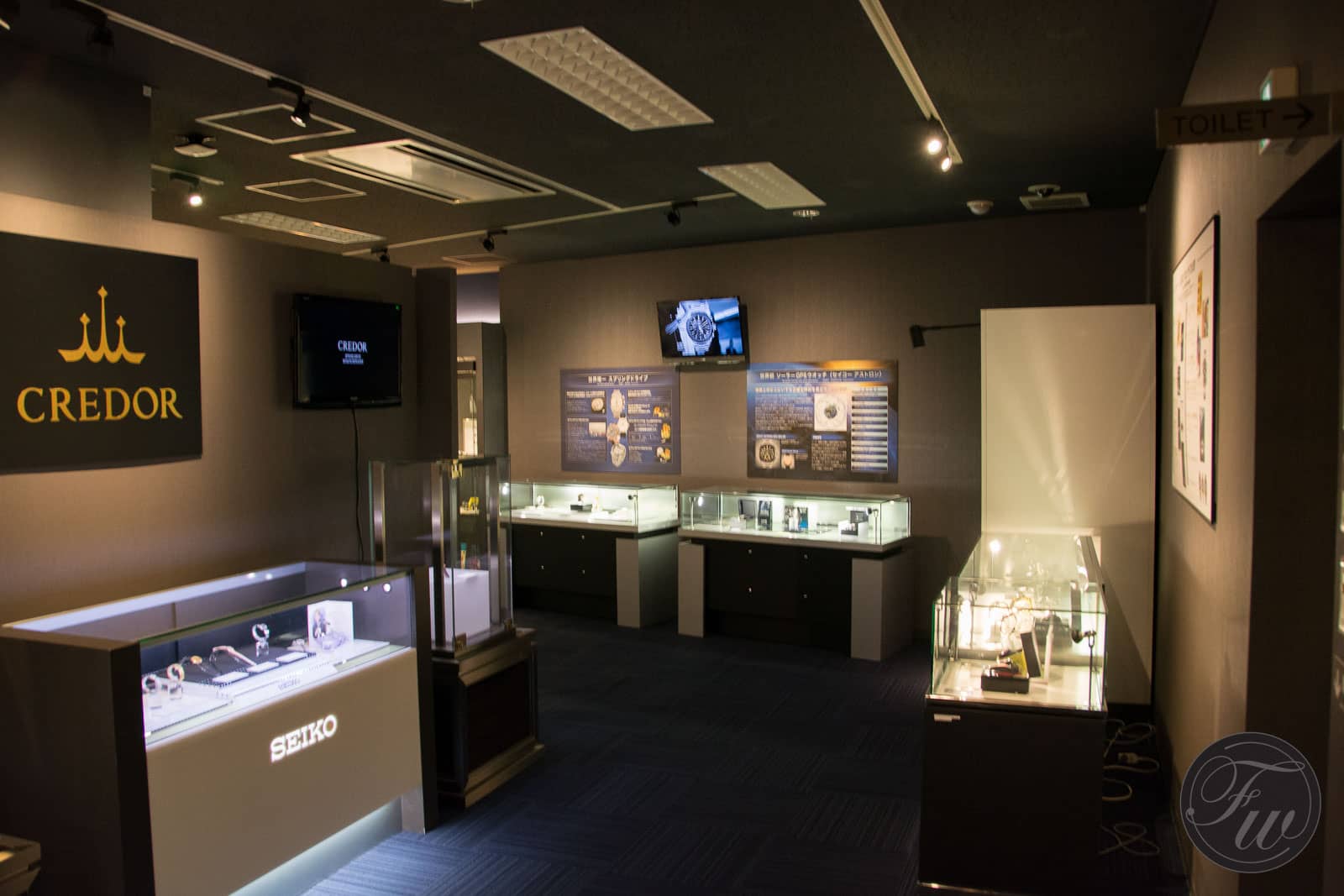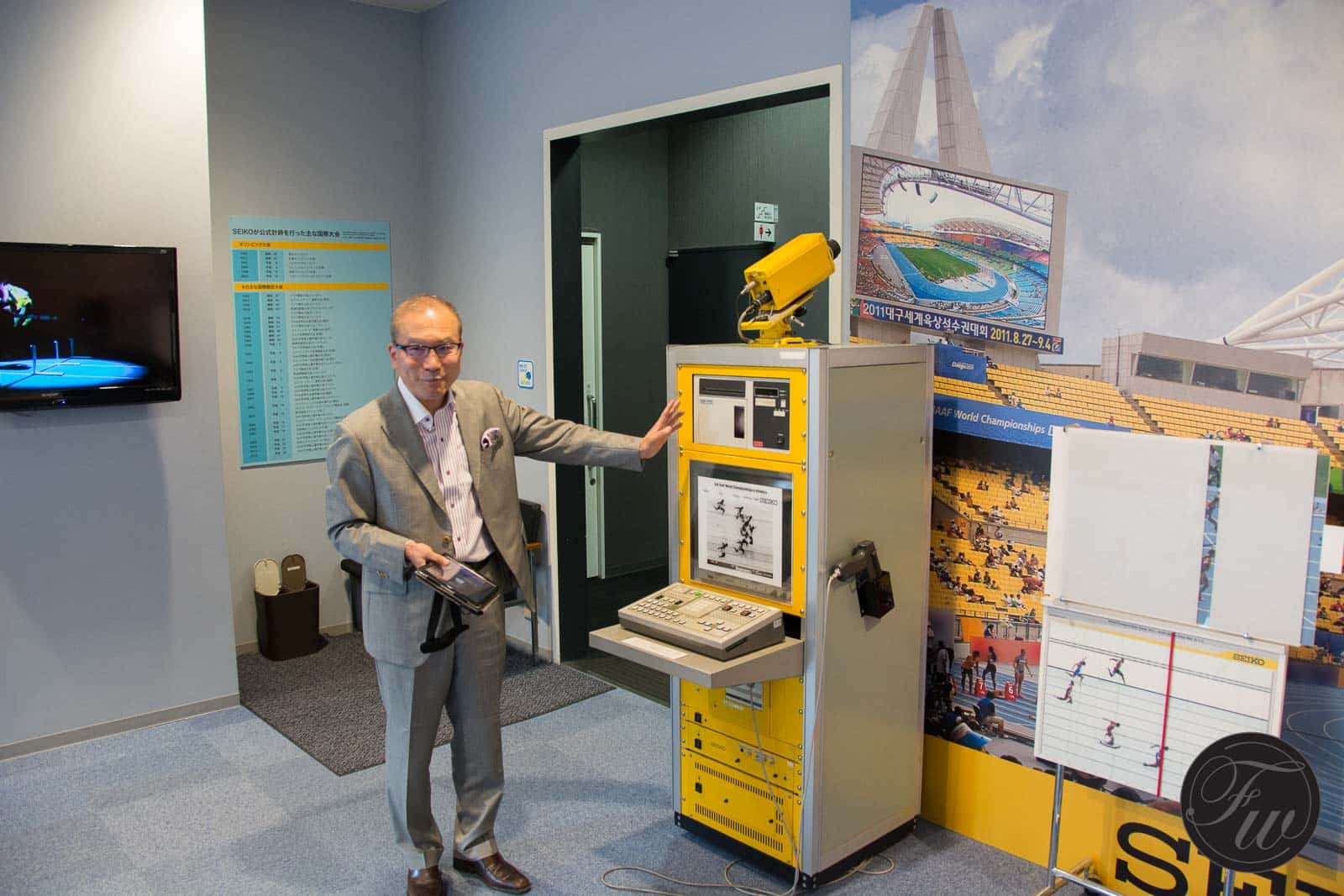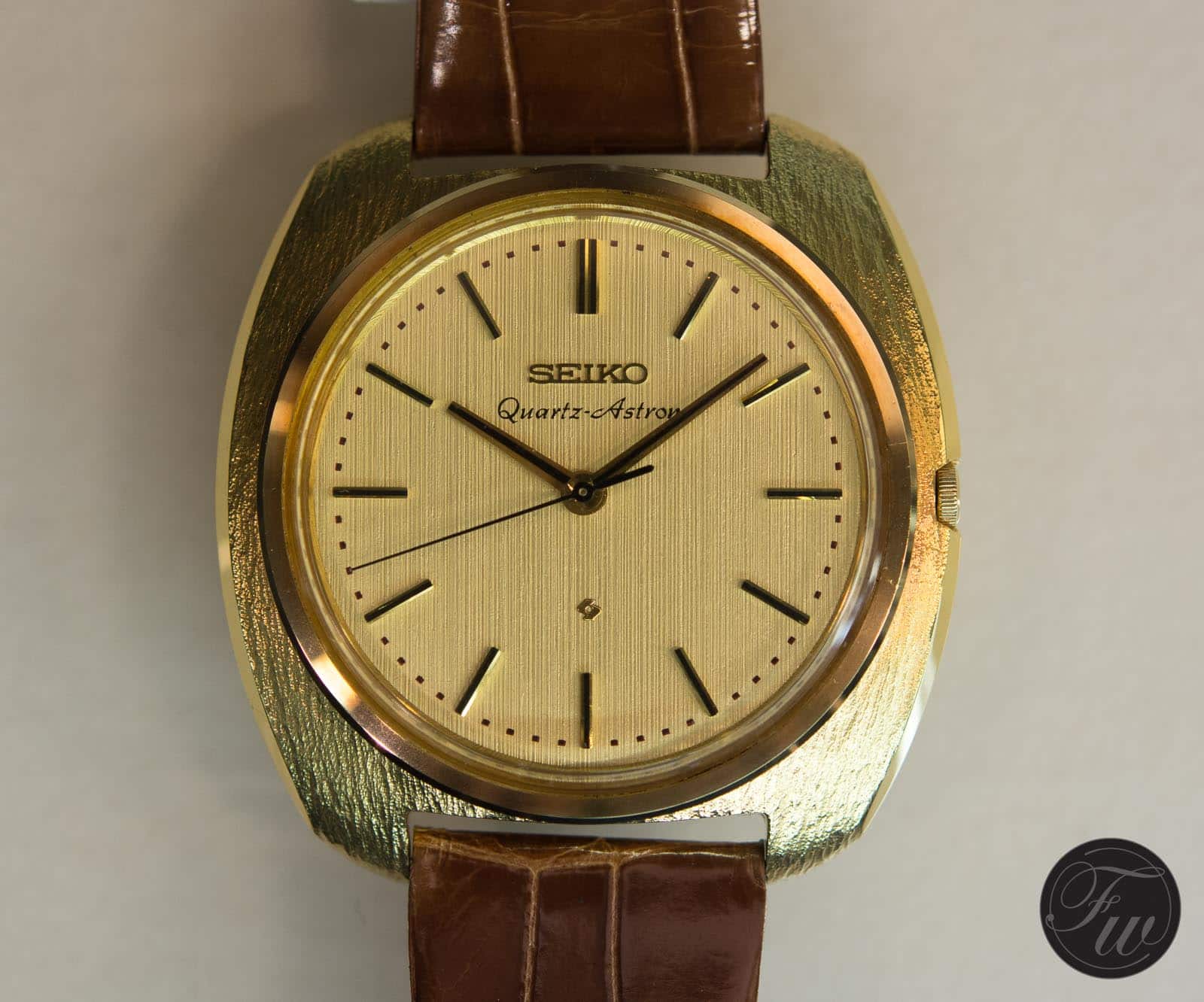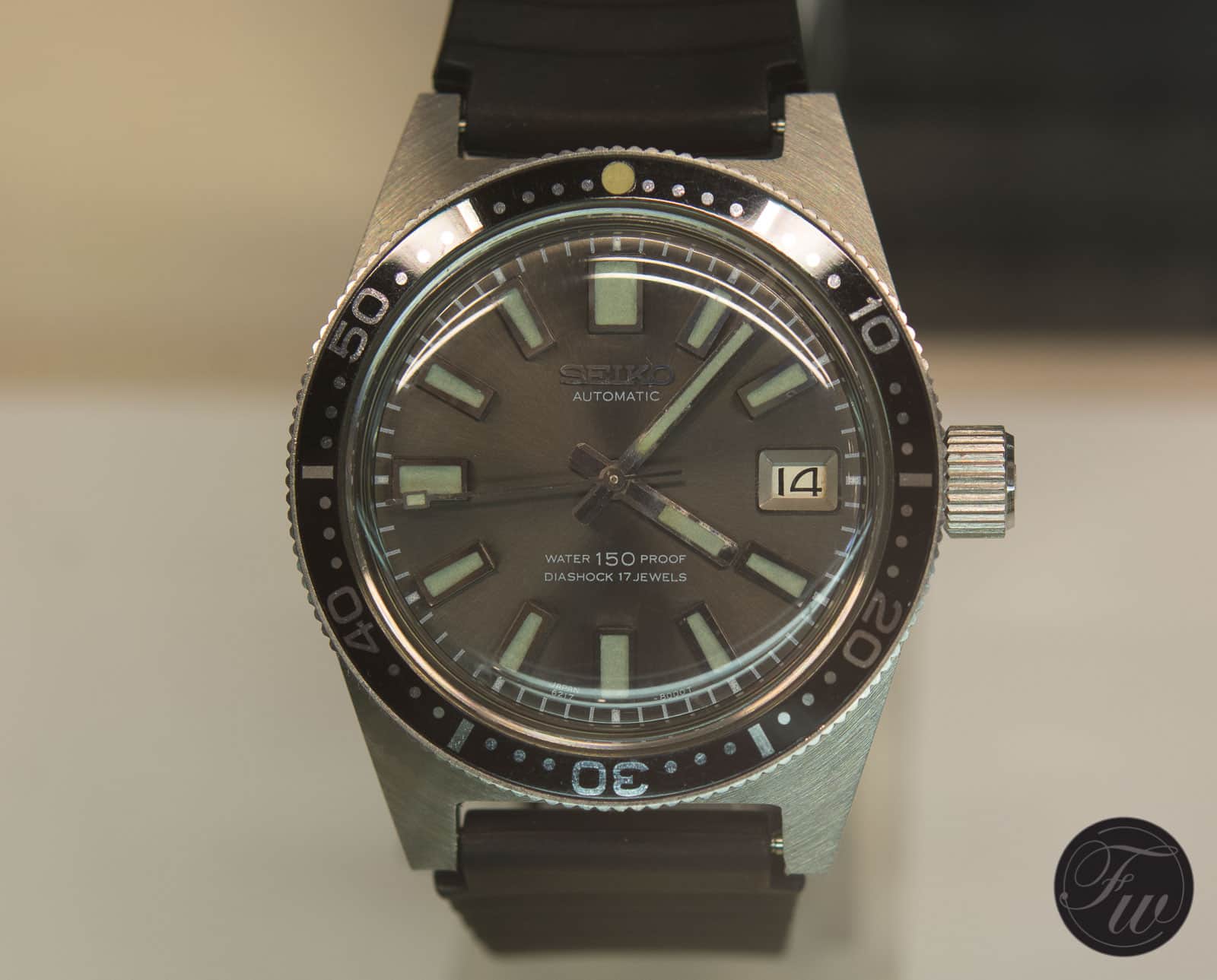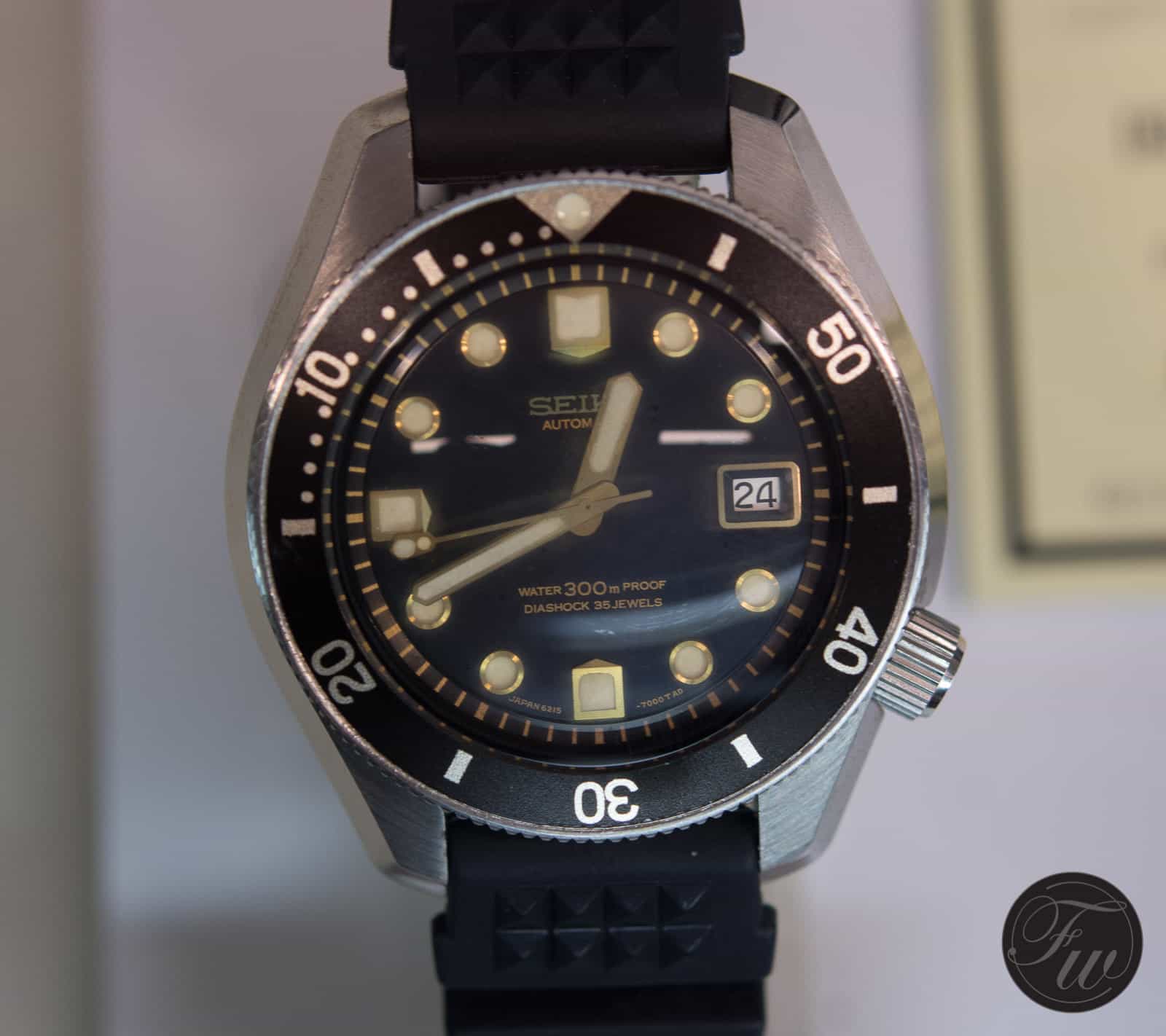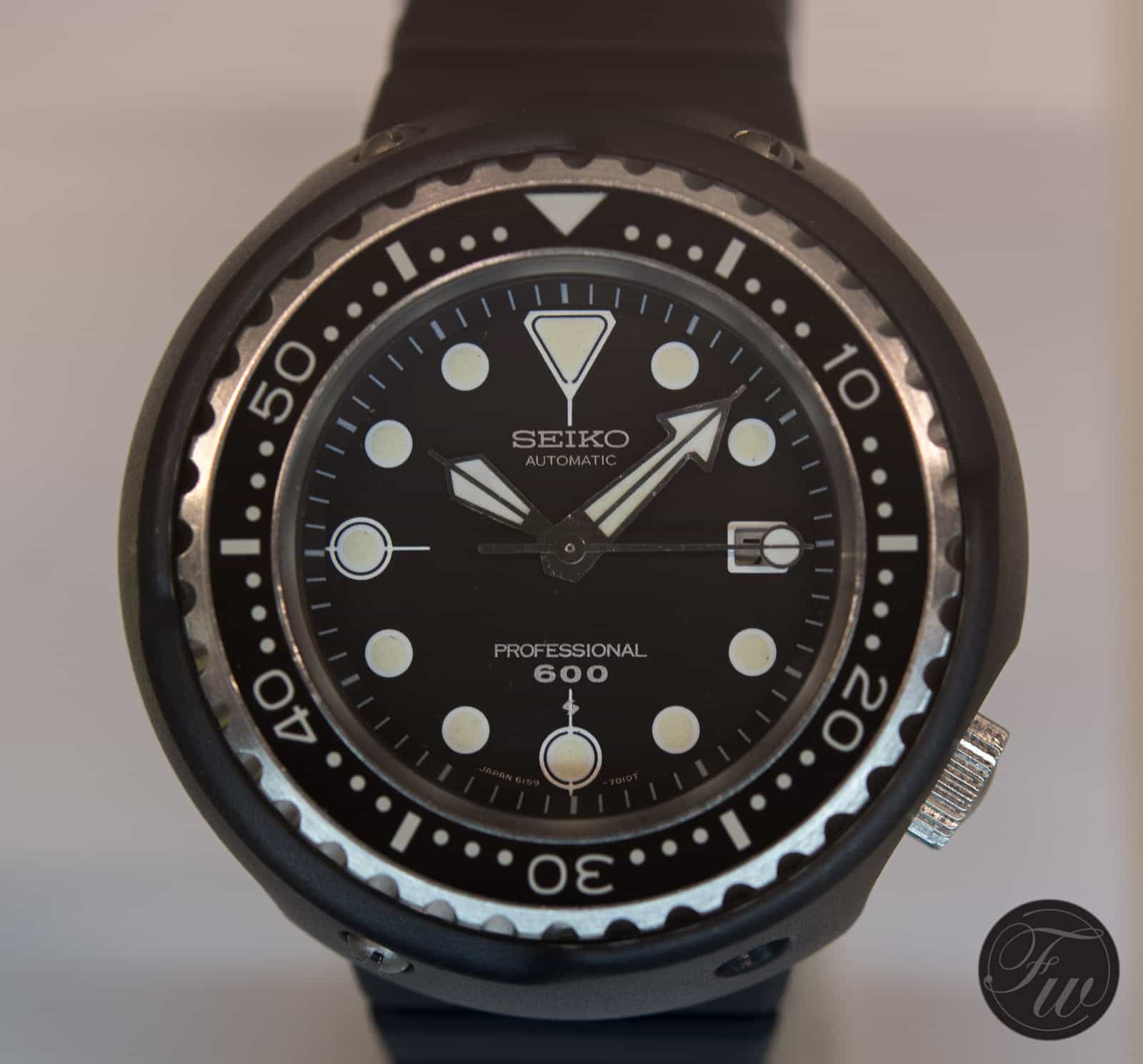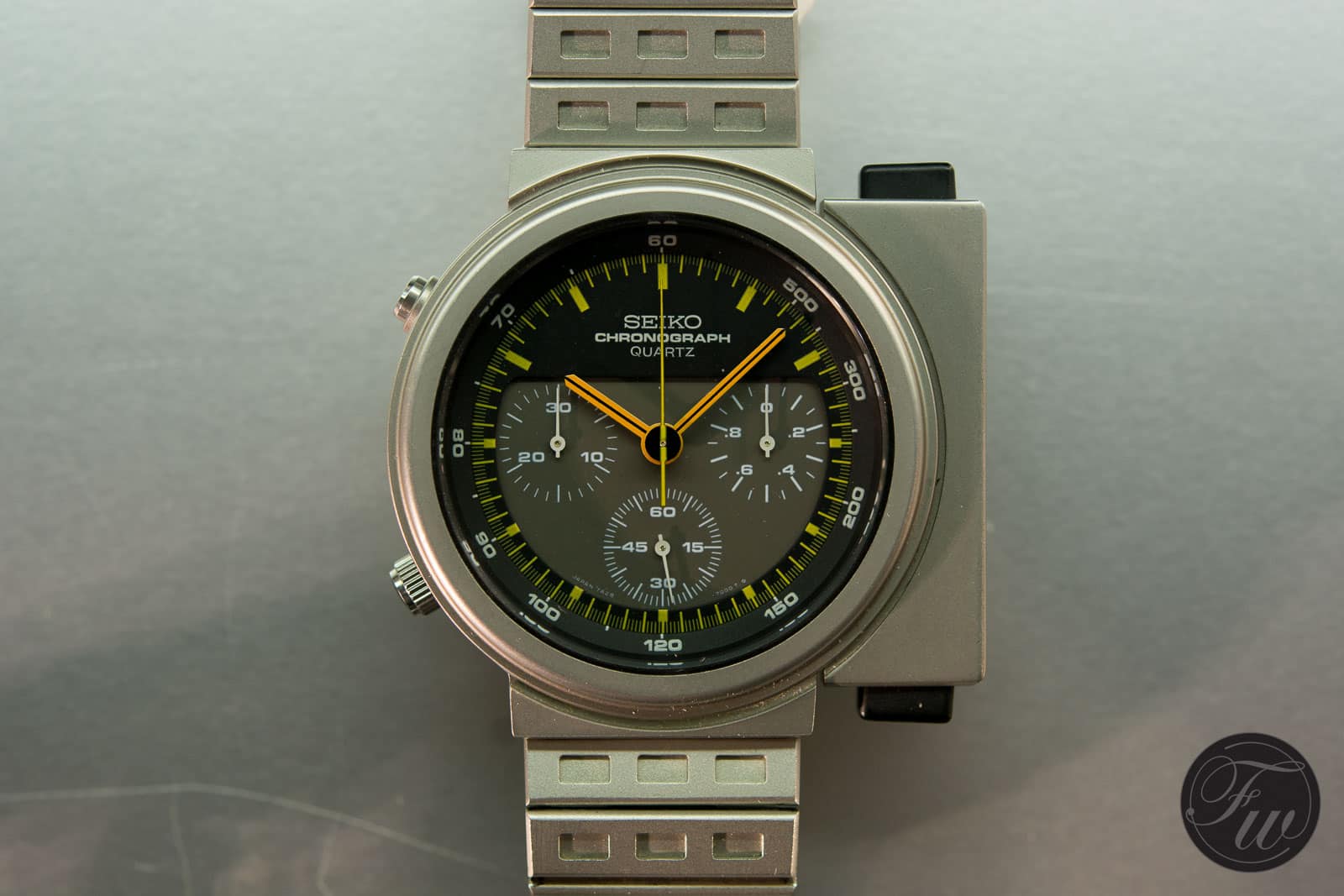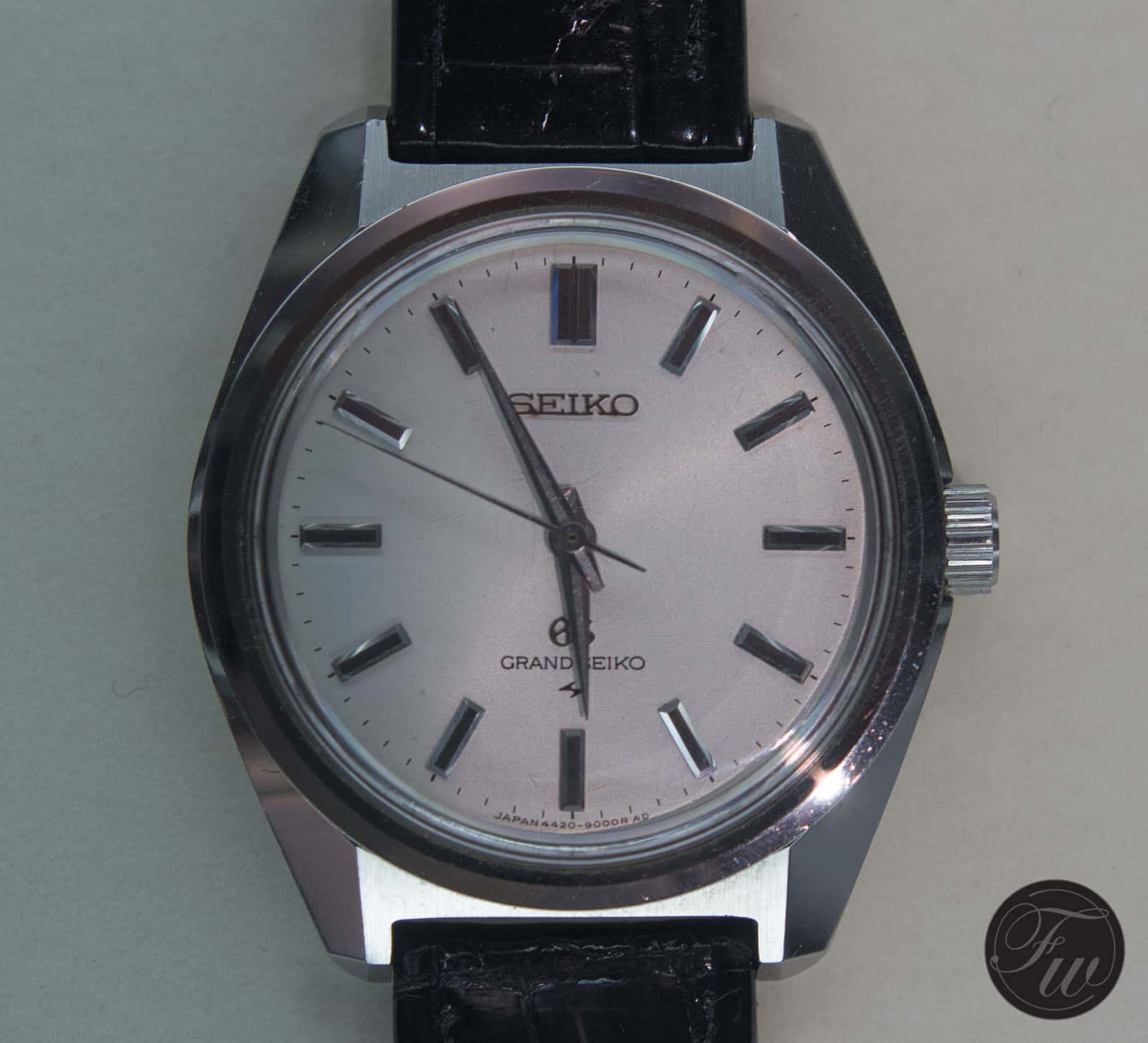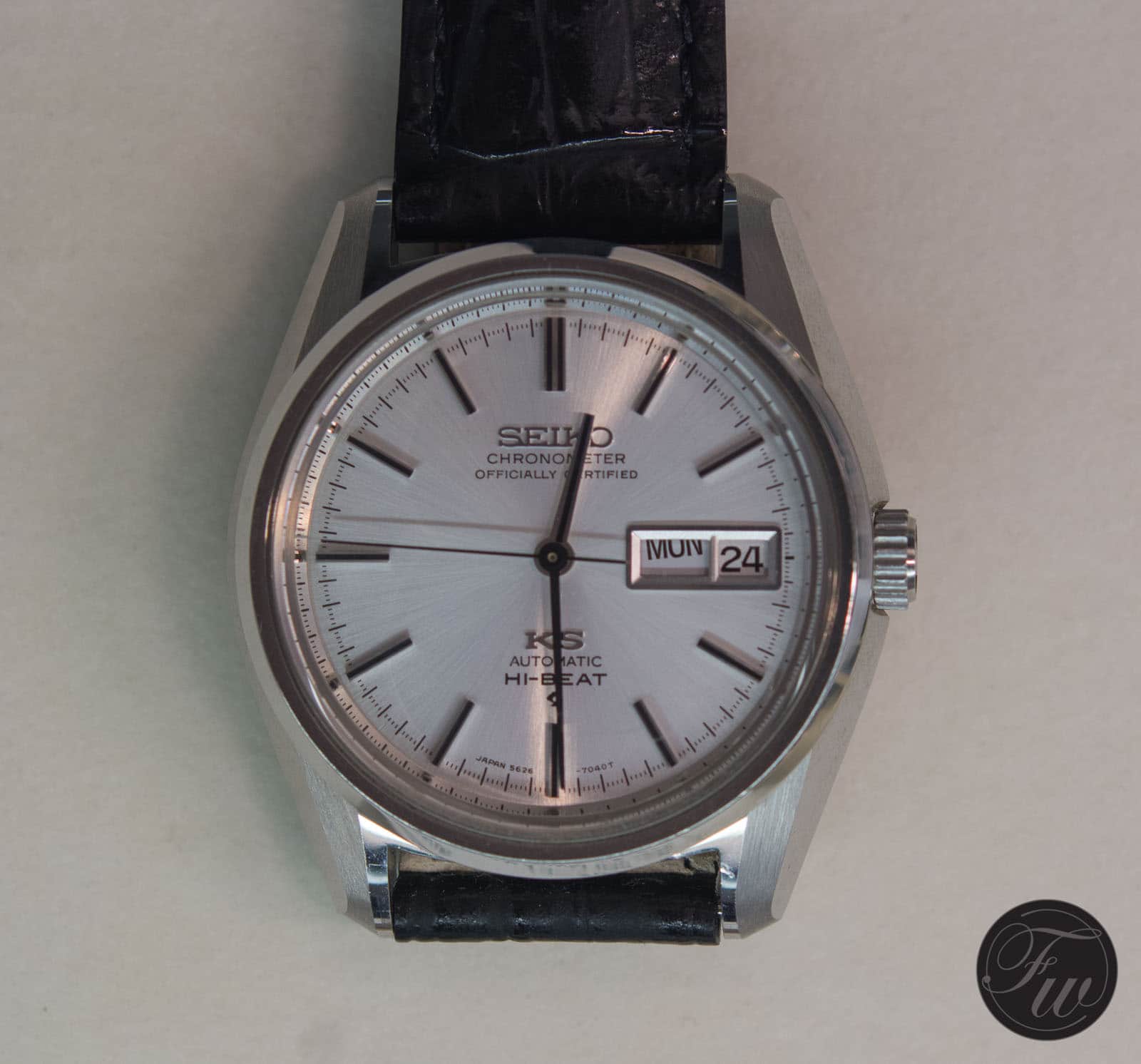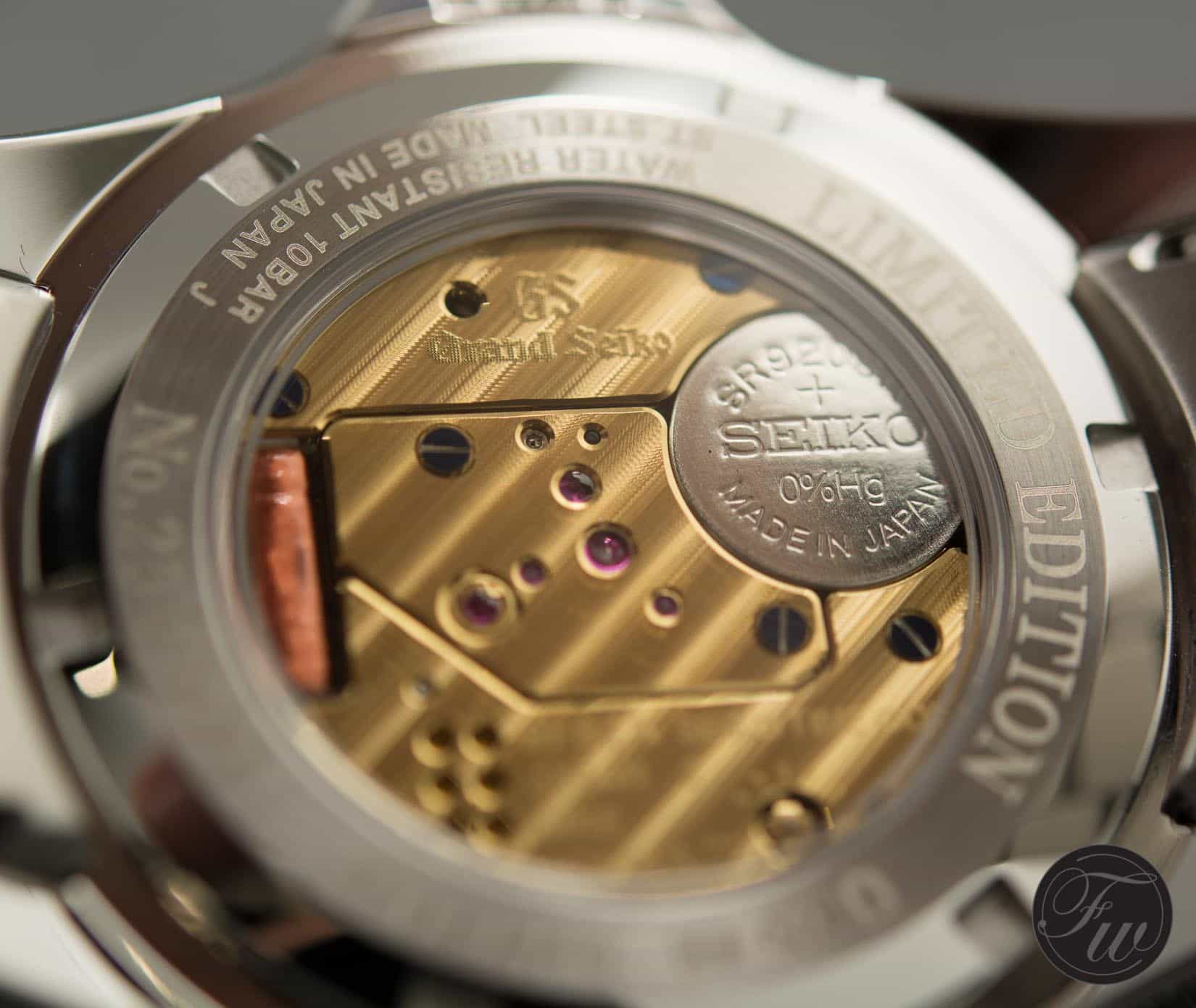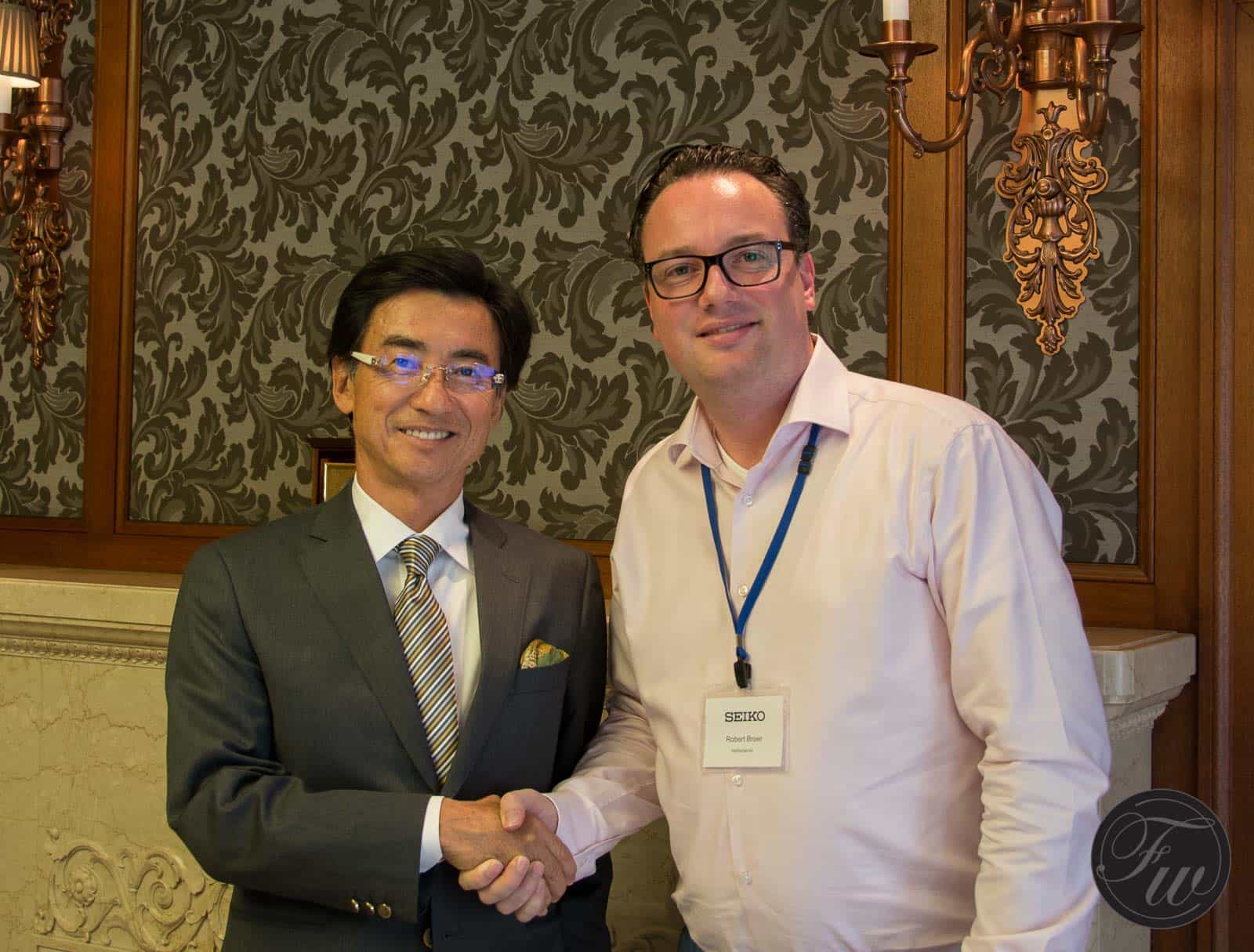SEIKO FACTORY VISIT – TRIP REPORT PART 3: Seiko Museum visit and interview with Mr Hattori
June 8, 2017: You can now sign-up for the same adventure as described in this article. Sign-up for the Grand Seiko Experience with Fratello Watches.
Last year in October, I traveled to Japan to join the Seiko Media Experience 2015 tour with 6 other journalists (a.o Jason Heaton, from the Grey Nato, Thomas Wanka from Uhren Magazine and James Buttery from Watch Pro). It was a trip to remember and I decided to report about this trip in three separate articles.
- Part 1 – Visit to the (Grand) Seiko and Credor facilities in Morioka and Shiojiri;
- Part 2 – Astron GPS and Prospex collections;
- Part 3 – Seiko Museum visit and interview with Mr Hattori
This is the third and final part of my Seiko Factory Visit trip report, the first two parts can be found by clicking the links above. This part is about my visit to the Seiko Museum and includes a short interview with Seiko CEO Mr Hattori.
The Seiko Museum
During the last day of my 7-day travel in Japan, we went to visit the Seiko Museum in Tokyo. Before we visited the museum, I had an interview with Seiko’s CEO Mr Hattori. I will come back to that a bit further down this article.
I’ve seen a couple of watch museums in the last 10 years, and I recommend you to visit one if you haven’t done so. I am particularly interested in mono-brand museums, as ‘generic’ watch and clock museums often don’t go deep enough on a certain brand, model or innovations in my opinion. So let’s have a look at the Seiko Museum:
After getting an introduction on the Seiko museum by the curator, giving us a trip down memory lane and showing some of the high-lights of Seiko’s watchmaking, we received an interesting tour in the Seiko Museum. Besides a load of great Seiko clocks and timepieces, there is also this timing set-up for athletes like a timing device for swimming and for running. The Seiko Museum also has a little shop with a couple of watches, clocks (also for kids) and some books on Seiko. I bought the book on Prospex after I met with author Ikuo Tokunaga and received an explanation on the Marinemaster models from him (which you will find in Part 2, see above).
However, and you will probably recognize this, in the end you just want to see watches. The watch you already know, watches that will surprise you and watches you’ve only seen in pictures.
Below I show you some (personal) high-lights of the Seiko Museum. Others might have interest in different Seiko watches, so I would urge you to plan a visit to the Seiko Museum yourself if you are in Tokyo. It is definitely worth it.
Seiko Quartz-Astron
The Seiko Quartz-Astron was the first watch with a quartz operated movement. The Seiko Museum has it on display in Tokyo. This particular piece could be held responsible for killing a lot of Swiss watch manufacturers in the 1970s. It basically initiated the quartz crisis, leading to a lot of bankruptcies in Switzerland and elsewhere during that period. Now, the model Astron is used again in the GPS controlled Seiko watches that we reviewed here and here. Not sure why Seiko decided to use the name Astron again, it might be a little nod to the tumult it caused in the 1970s with the highly accurate quartz movement.
Seiko 62MAS
The first professional diver watch from Seiko was the 62MAS in 1965, as discussed for one of our #TBT features by Michael. You can find it here. The 62MAS is a bit of a strange name, but it refers to autoMAtic Selfdater and bears the reference 6217-8000/1. The caliber 6217 movement has a quickset date and is hand-wound. It had a water resistance of 150M, where other water resistant Seiko watches had a WR rating of 50M. Although it had a diving scale bezel, strong lume on hands and markers and a screw-down caseback, the crown was not screw-down.
Seiko 6159-7000
A few years later, in 1968, Seiko introduced the reference 6159-7000. This mono-bloc stainless steel watch was a professional divers watch capable to withstand 30ATM (~300M). It succeeded the reference 6215 watch and had a hi-beat 36,000vph movement. You might recognize the design a bit, as Seiko basically found a successor in the current Seiko Marinemaster 300 model (I reviewed it here). On this website you’ll find a very interesting analysis of a vintage Seiko 6159-7000 including a fair bit of history, well worth checking out.
Seiko 6159-7010 Grandfather Tuna 6159-7010
This watch doesn’t need an introduction on Fratello Watches, as Michael Stockton and myself covered it quite a bit here. We both own a 6159-7010 Grandfather Tuna and it is a great watch to wear once in a while. It was developed by the earlier mentioned Ikuo Tokunaga and meant (and used) for professional diving operations. It has a mono-bloc case (so no helium valve needed), large numerals and big hands for better visibility, a diving scale bezel and a protective ceramic shroud. More information can be found here, here and here.
Seiko 7A28-7000 “Aliens”
A similar watch was worn by “Ripley” in the movie Aliens (1986), played by Sigourney Weaver. She was waring the Seiko 7A28-7000, designed by Giugiaro. An odd looking watch, so odd, that it was chosen to be on the wrist of Ripley. Giugiaro was also responsible for designing cars, Nikon cameras and Apple products. The chronograph pushers, as you can see, are vertically placed in a little unit attached on the right side of this watch. In 2015, Seiko did a re-edition of this “Aliens” piece in a batch of 3000 pieces.
Grand Seiko and King Seiko
The Seiko Museum had a lot of these (smaller) Grand Seiko and King Seiko models from the 1960s/1970s. I will do a feature on the King Seiko soon, as my watchmaker has a very nice collection of them. I asked Seiko what the exact difference is between the Grand Seiko and King Seiko models, as they look so incredibly similar in terms of design. They answered that the Grand Seiko has a better regulated movement, like a chronometer vs a non-chronometer. The difference in price on the market is quite big, so it is perhaps interesting to have a thorough look at some of the King Seiko models, if you are into vintage.
More Watches
Here are some more watches I came across in the Seiko Museum, that I either recognized from my youth or that I just found interesting.
Seiko and Sports
The Seiko Museum has a fairly big room to demonstrate the relationship between Seiko and sports.
Interview with Seiko’s CEO Hattori
Mr Hattori is the CEO from Seiko since quite some years. Last year, he came up with the Seiko slogan ‘Moving ahead. Touching hearts.’ which I can relate to the Astron GPS watches, but especially ‘Touching hearts’ is something I personally associate with mechanical (let me include Spring Drive there as well) watches. Mechanical watches have soul, as they say, and most of the time I do agree with that, but I also can see the love for the Grand Seiko quartz (9F) movements actually. They are manufactured with passion and love for precision. I would actually prefer a Grand Seiko quartz caliber 9F movement over some mechanical movements, for sure. My review (clickable link above) hopefully gives you some insights in their high-end quartz movements.
Since we were with a couple of journalists, we were asked to submit three questions in advance. I thought it would be interesting to ask about the Grand Seiko and the marketing of those models in Europe, as both Germany and The Netherlands (were Fratello Watches has its offices) only have a few retailers on those (including two Seiko Boutiques, in Amsterdam and Frankfurt).
Also, as I’ve written before in other Seiko related articles, I do worry some times about the differences in taste between certain countries and regions. So I wanted to ask Mr Hattori about these differences and whether they participate on these different type of (design) demands.
Here we go:
Mr Hattori, can you elaborate on the strategy of rolling out the Grand Seiko models to Europe and its current status?
We started to roll-out the Grand Seiko watches to Europe since 2010 and it is still an on-going process. We are very pleased with the results so far. Seiko has about 40 retail partners for the Grand Seiko collection in Europe and we get a lot of requests from retailers to carry our Grand Seiko watches. We’ve experienced a double digit grow on Grand Seiko.
Furthermore, we have Seiko boutiques in Paris, Madrid, Amsterdam, Frankfurt, Budapest and Moscow where we present the Grand Seiko collection to customers.
We are lifting the profile of Grand Seiko watches, also by putting a lot of attention to them during BaselWorld. We have a very strong confidence in Grand Seiko for the future. In Japan, Grand Seiko has a spot in the Top 5 of luxury watch brands.
Do you sense that European customers have an interest in different Grand Seiko models than, let’s say, customers from Japan? Do you act upon these different demands?
Yes, we notice differences between Grand Seiko customers from Japan and Europe. One of the things we noticed is that the Grand Seiko 9F caliber (quartz) has a higher demand in Japan. The 9S (mechanical) and 9R (Spring Drive) have a much bigger appeal to European customers. Hopefully we will see that Europe will start to appreciate the caliber 9F as well. This is from a technical standpoint of course. As far as aesthetics, we see that European customers want to have a larger case diameter. We see that the collections with larger diameters do better in Europe. This year (2015) we also introduced a number of models for the European market.
Overall, we see the world wide popularity for the Grand Seiko increasing, due to some fundamental characteristics of the Grand Seiko collection, like legibility, accuracy and finish.
We have a lot of Seiko fans amongst our readers. However, we also have a lot of readers with a main focus on Swiss and German made watches and seem to neglect Seiko. What message would you like me to pass on to them?
The words ‘Swiss Made’ are very powerful. It stands for extraordinary quality and we have great respect for that. It is also a great help for Seiko as it also creates room for Grand Seiko. Grand Seiko is a powerful brand, with a lot of character and strength.
There are a couple of things about Seiko that you should know:
- Seiko is innovative, look at the Astron and Spring Drive technologies we introduced;
- We are a true manufacture;
- We produce every type of movement there is, from digital quartz movements to high-beat mechanical movements;
While the Swiss watch industry is focusing on traditional watchmaking values, we choose for creativity, innovation and practicality.
In any case, the winner here is the consumer as they have more options from brands made in Europe and Japan.
Thank you Mr Hattori
June 8, 2017: You can now sign-up for the same adventure as described in this article. Sign-up for the Grand Seiko Experience with Fratello Watches.

